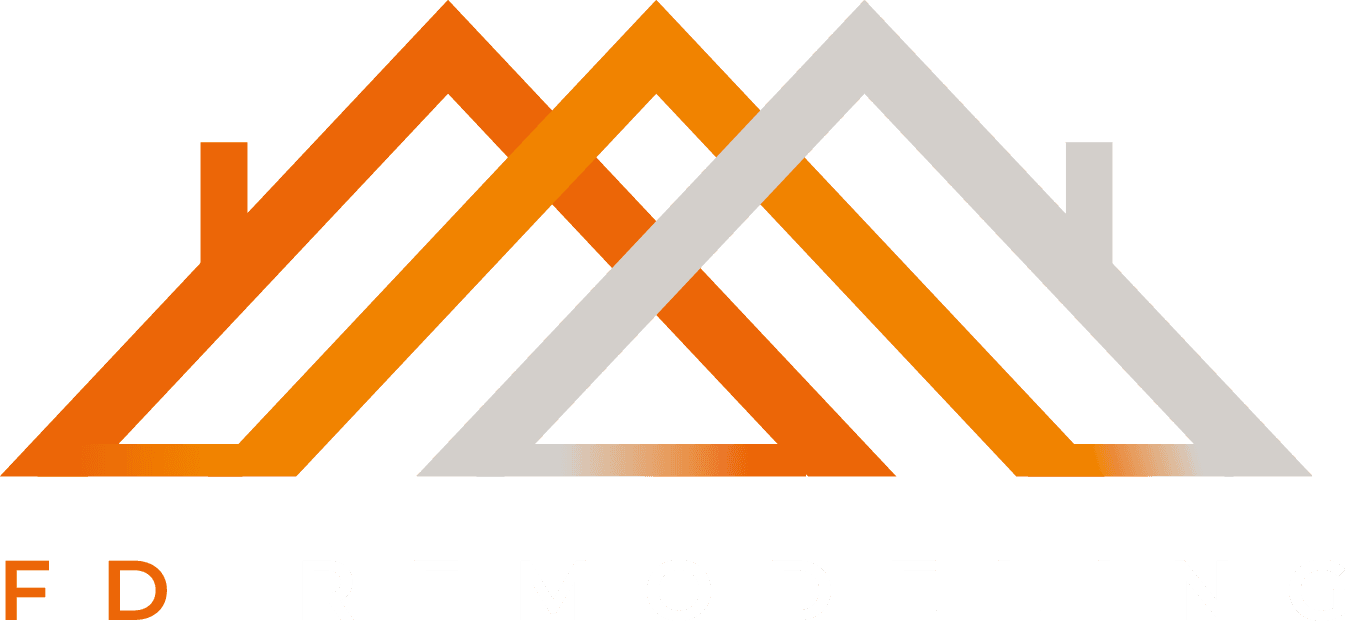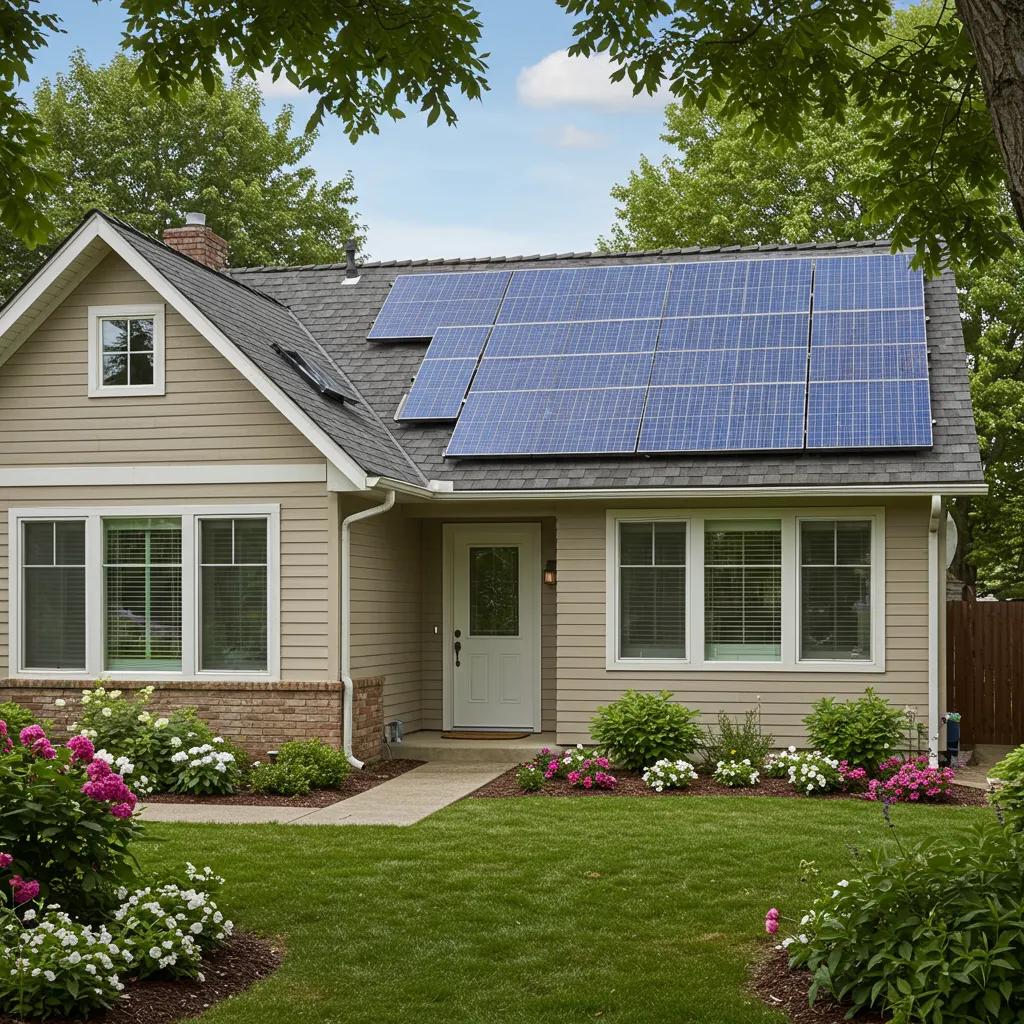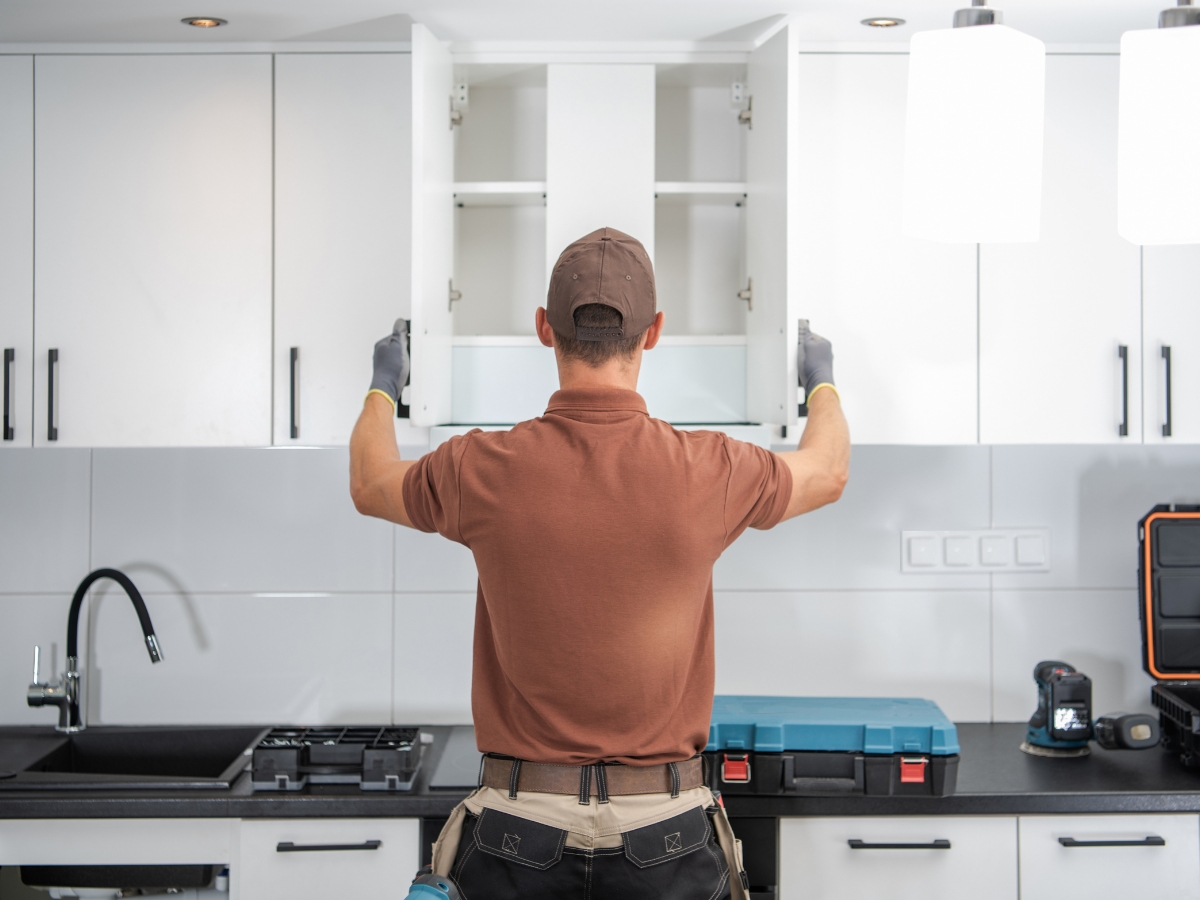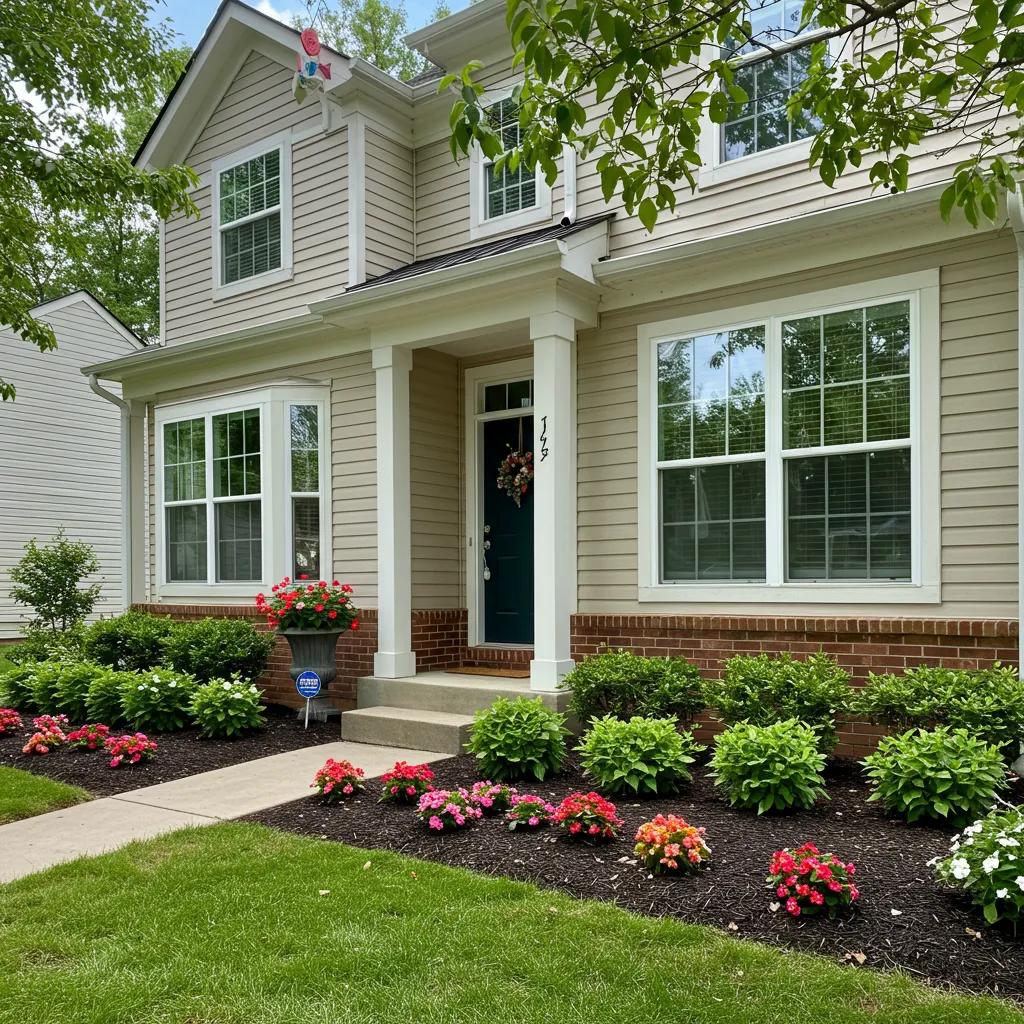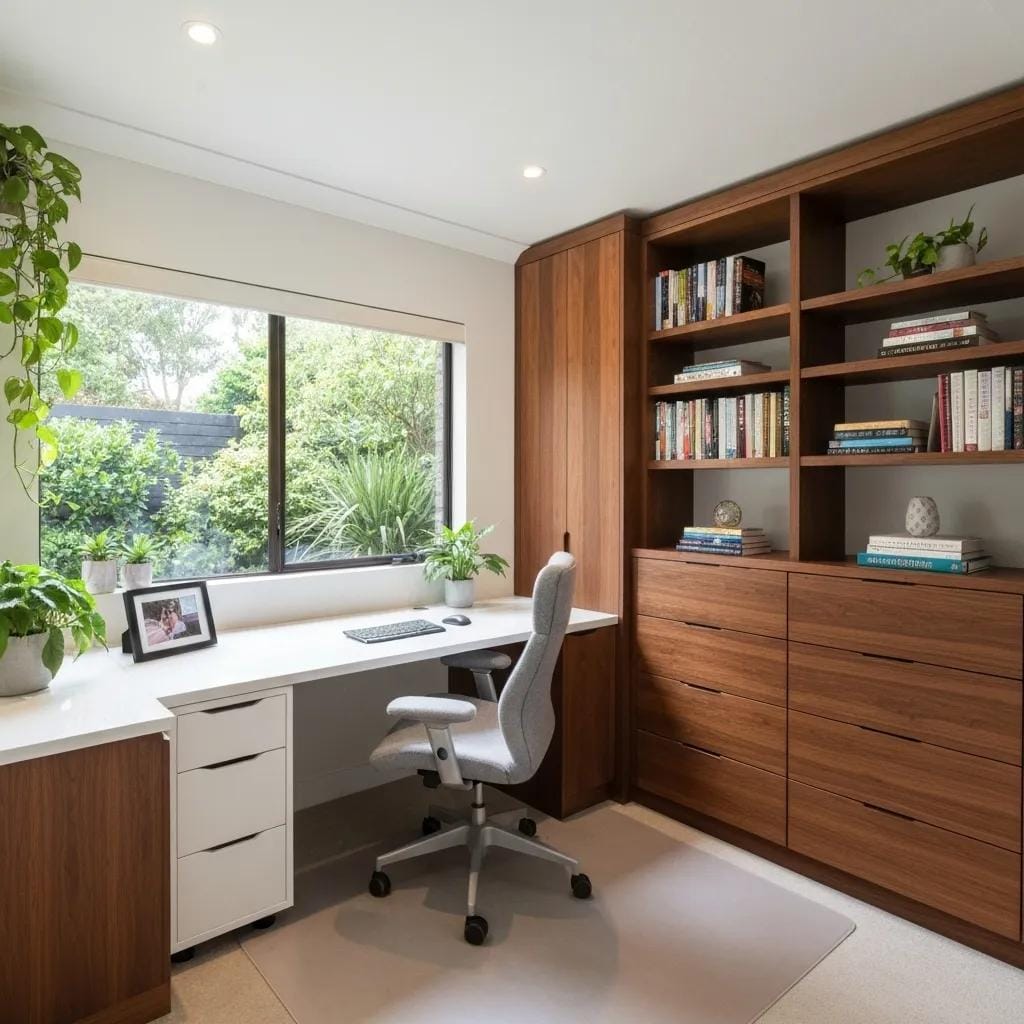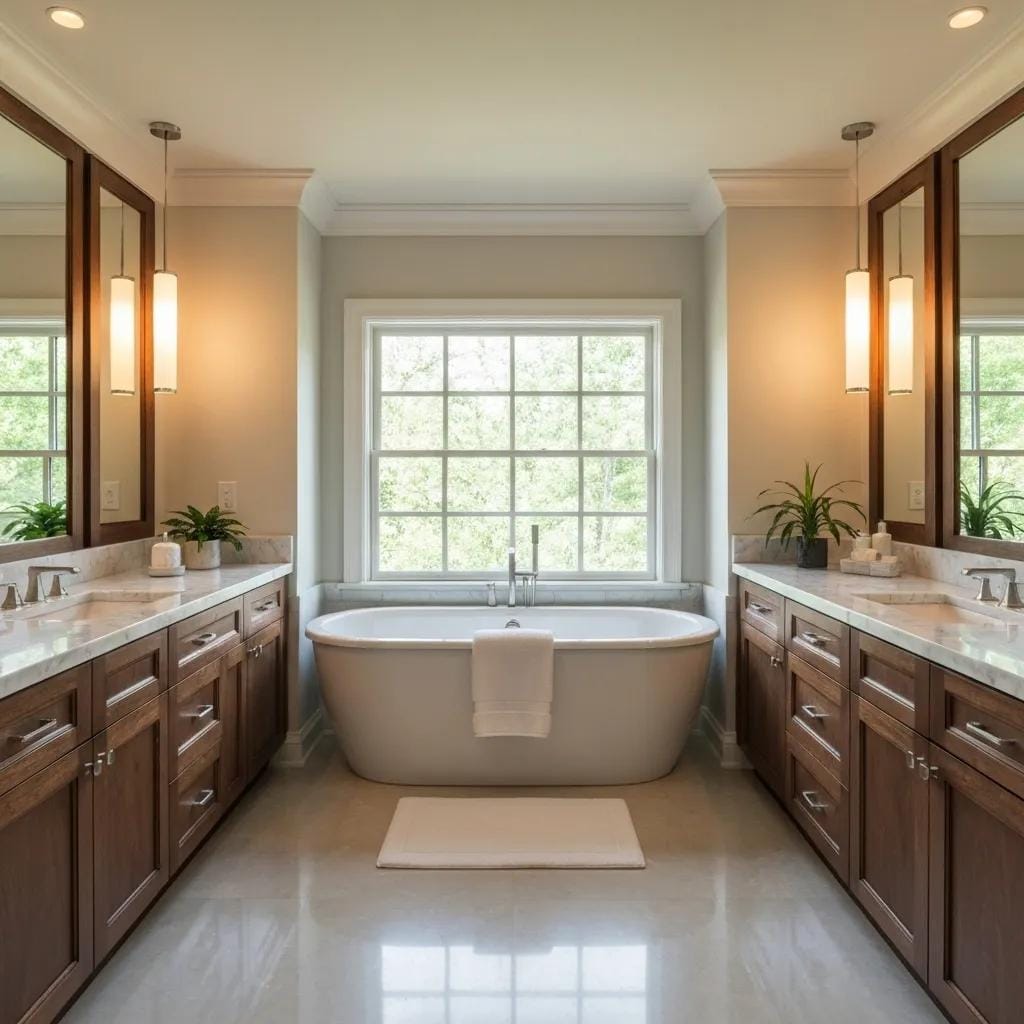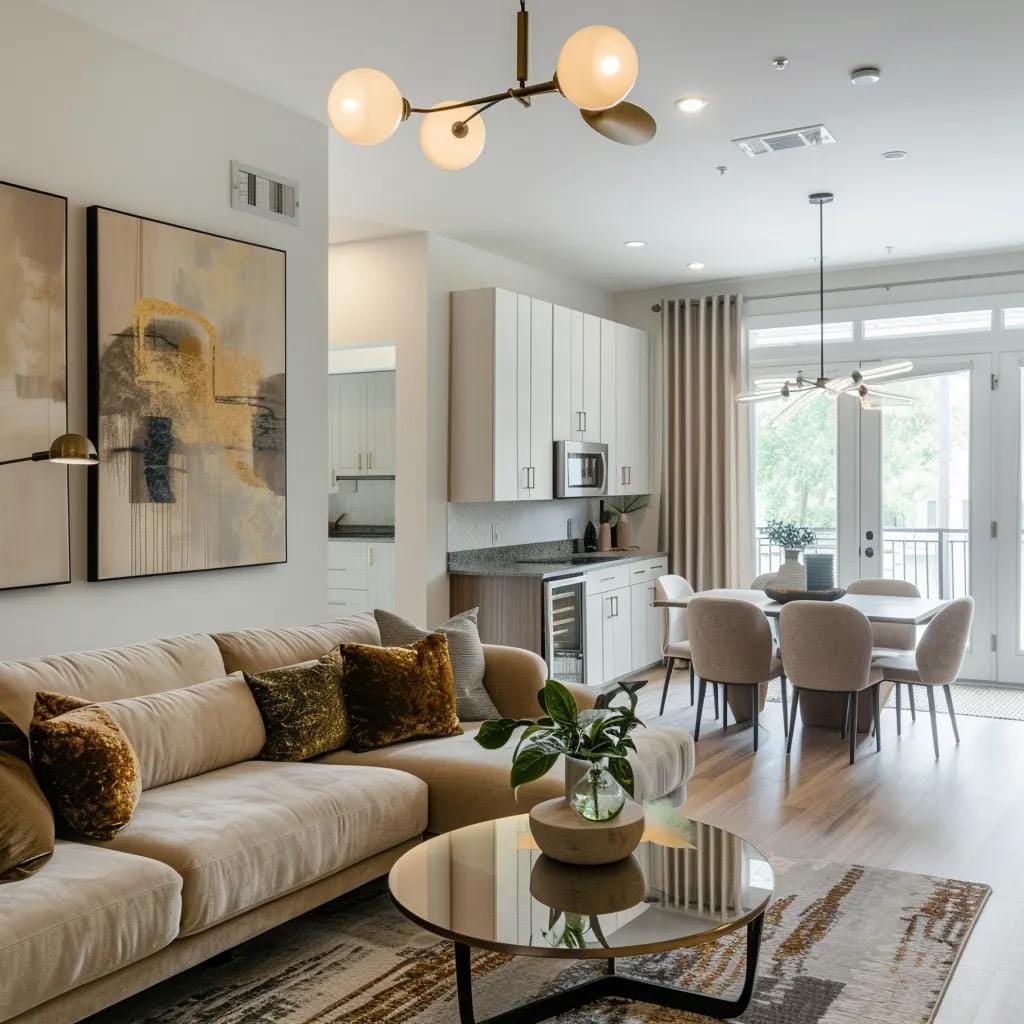For homeowners in Johns Creek, energy-efficient home remodeling is no longer just an eco-friendly choice—it’s a smart financial strategy that reduces utility bills, increases property value, and enhances everyday comfort. From upgrading to high-efficiency HVAC systems and installing advanced insulation to incorporating solar-ready roofing and smart home technology, today’s green upgrades deliver lasting returns while minimizing your environmental footprint. In this guide, we’ll explore the most impactful energy-efficient improvements for Johns Creek homes, helping you prioritize projects that maximize long-term savings, improve indoor air quality, and future-proof your investment in a sustainable lifestyle.
Energy-Efficient Home Remodeling: Save Money Year-Round
- Why Go Green With Your Home Remodel In Johns Creek?
- What Are the Top Energy-Saving Upgrades for Johns Creek Homes?
- How Does FD Remodeling Atlanta Manage Your Energy-Efficient Remodeling Project?
- What Local Incentives And Financing Options Are Available In Johns Creek?
- How To Get Started With Energy-Efficient Remodeling In Johns Creek
- Conclusion
Why Go Green With Your Home Remodel In Johns Creek?

Energy-efficient home remodeling upgrades your house with materials and systems that cut wasted energy and tame utility bills. In Johns Creek’s humid subtropical climate, that means stopping heat and moisture before they reach your living spaces, tightening the building envelope, and right-sizing equipment so it runs efficiently instead of constantly cycling. Done well, these improvements stabilize indoor temperatures, curb drafts, lower noise from outside, and create a healthier, more comfortable home year-round.
How Do Smart Upgrades Actually Cut Your Bills And Save You Money?
Savings come from two places: using less energy to achieve the same comfort and stopping conditioned air from escaping. Double-pane Low-E windows reduce heat transfer and solar gain, which lowers summer cooling demand and helps your HVAC system cycle less often. Attic air sealing paired with spray foam or dense-pack insulation closes the gaps that leaks and pests exploit while boosting R-value.
A high-efficiency HVAC system with proper duct sealing can use up to 20 percent less energy than an older, oversized unit, especially when paired with a smart thermostat that follows your schedule. Solar panels offset grid electricity with clean generation, trimming monthly costs and providing resilience during peak-rate periods. Many Johns Creek homes see annual savings stack up quickly when these measures are combined, particularly if you prioritize the attic, ducts, and windows first.
How Do Green Remodels Boost Your Home’s Value And Market Appeal?
Buyers increasingly look for lower operating costs and environmentally responsible features. Homes with documented energy upgrades often appraise higher and attract stronger offers because the next owner inherits lower bills and newer systems. Visible improvements such as high-performance windows, insulated doors, and fresh siding improve curb appeal, while behind-the-walls upgrades like insulation and air sealing demonstrate quality. Third-party designations such as ENERGY STAR for windows, efficient HVAC ratings, or a verified blower-door test add credibility and help your listing stand out without relying on heavy staging.
What Should Johns Creek Homeowners Prioritize First?
Start where heat and humidity do the most damage. In most houses, that is the attic and the ducts. Air seal penetrations around light fixtures, flues, and top plates, then bring attic insulation up to modern levels so the thermal barrier is continuous. Next, seal and balance the ductwork to improve airflow and reduce room-to-room temperature swings. If your system is nearing the end of its life or your repair bills are rising, consider a high-efficiency heat pump matched to your home’s load. Finally, address windows and exterior doors, focusing on units that receive the most sun or face prevailing winds.
How Does Energy-Efficient Remodeling Improve Comfort And Environmental Footprint?
Better envelopes and right-sized equipment keep indoor temperatures even, so bedrooms and bonus rooms feel the same as the main living areas. Quieter operation, fewer hot and cold spots, and improved humidity control make daily life more comfortable. Because your home uses less energy to do the same work, it also lowers greenhouse gas emissions tied to electricity and natural gas. Balanced ventilation with high-efficiency filtration can further reduce pollen and fine particles, a meaningful benefit during high-pollen seasons in North Fulton.
A smart plan targets the building envelope first, then equipment, then renewables. By sequencing upgrades and testing results along the way, you lock in real performance gains and long-term value. That is the practical path to energy-efficient home remodeling in Johns Creek: lower bills, better comfort, and a home that feels great in every season.s and managing humidity levels.
What Are the Top Energy-Saving Upgrades for Johns Creek Homes?
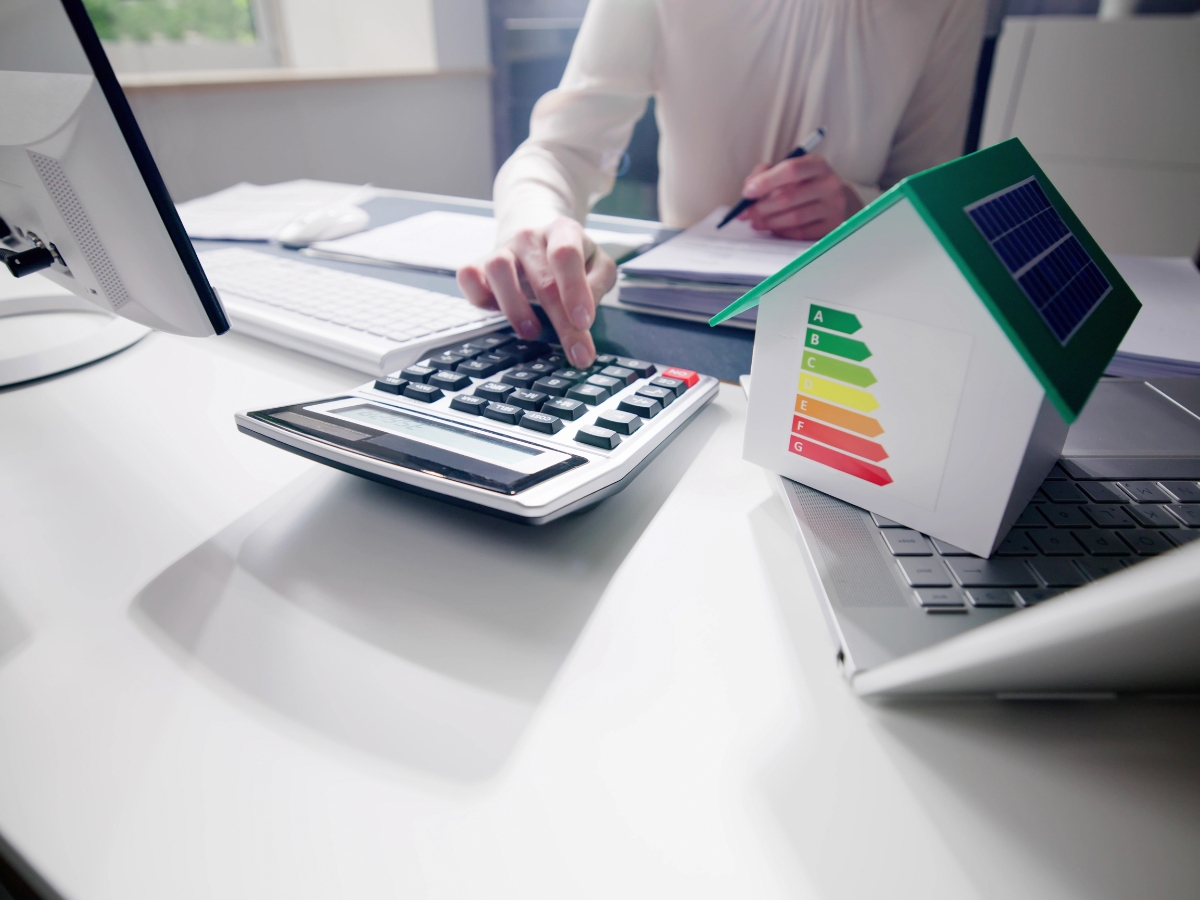
If you are planning energy-efficient home remodeling, start with projects that deliver the biggest impact for comfort and costs. High-performance windows and doors limit heat transfer. Upgraded insulation and careful air sealing keep conditioned air where it belongs. Modern HVAC systems use less power to maintain steady temperatures. Solar panels offset grid electricity. Sustainable finishes improve indoor air quality and often last longer with less upkeep. Treated as a package, these upgrades work together to lower bills and make your home more comfortable in every season.
What Are The Advantages Of Energy-Efficient Windows And Doors?
Replacing single-pane or aging units with double-pane Low-E windows and insulated steel or fiberglass doors reduces heat gain in summer and heat loss in winter. Better frames and weatherstripping close the gaps that let drafts sneak in. You get fewer hot and cold spots near glass, less fading of floors and furniture, and a quieter interior. Because your HVAC system no longer fights temperature swings, it cycles less and lasts longer.
How Does Advanced Home Insulation Boost Energy Savings?
Adding insulation to attics, walls, and crawl spaces creates a stronger thermal barrier. Materials like spray foam, dense-pack cellulose, or rigid foam board slow heat flow and seal the small cracks that leak air. The result is more even room temperatures and shorter run times for your heating and cooling equipment. Many homes see total energy use drop by 15 to 40 percent when insulation and air sealing are done together, especially when the attic and top-floor penetrations are addressed first.
Why Should You Choose High-Efficiency HVAC Systems For Your Home?
A right-sized heat pump or furnace with variable speed or multi-stage operation delivers the output your home needs without constant full-throttle cycles. Matched indoor and outdoor components, sealed ducts, and smart thermostats add precision and reduce waste. Zoning can direct heating and cooling where you need it most, which helps larger or multi-story homes maintain consistent comfort while trimming energy use.
How Can Installing Solar Panels Cut Your Energy Costs?
Photovoltaic systems convert Georgia sunshine into electricity you can use immediately. During peak months, a well-sized array can offset a large share of your consumption and reduce exposure to utility rate changes. Federal tax credits and some local incentives improve payback, which is commonly in the 6 to 8 year range for many households. If you add a battery, you can store excess production for evening use and keep essential circuits powered during brief outages.
What Sustainable Building Materials Support Eco-Friendly Remodeling?
Material choices influence durability, health, and maintenance. Low-VOC paints and sealants limit indoor pollutants. Cabinets made without added formaldehyde reduce off-gassing. Reclaimed wood and recycled-content flooring lower the environmental footprint while adding character. Fiber-cement or insulated siding improves weather resistance and can reduce heat transfer through walls. These products help you meet sustainability goals without sacrificing style or performance.
A smart plan targets the envelope first, then equipment, then renewables. Start with air sealing and insulation, tune or replace HVAC with efficient models, upgrade windows and doors where they will matter most, and consider solar to offset remaining usage. Measured this way, every project stacks savings on top of comfort and delivers a more resilient, efficient home in Johns Creek.
How Does FD Remodeling Atlanta Manage Your Energy-Efficient Remodeling Project?
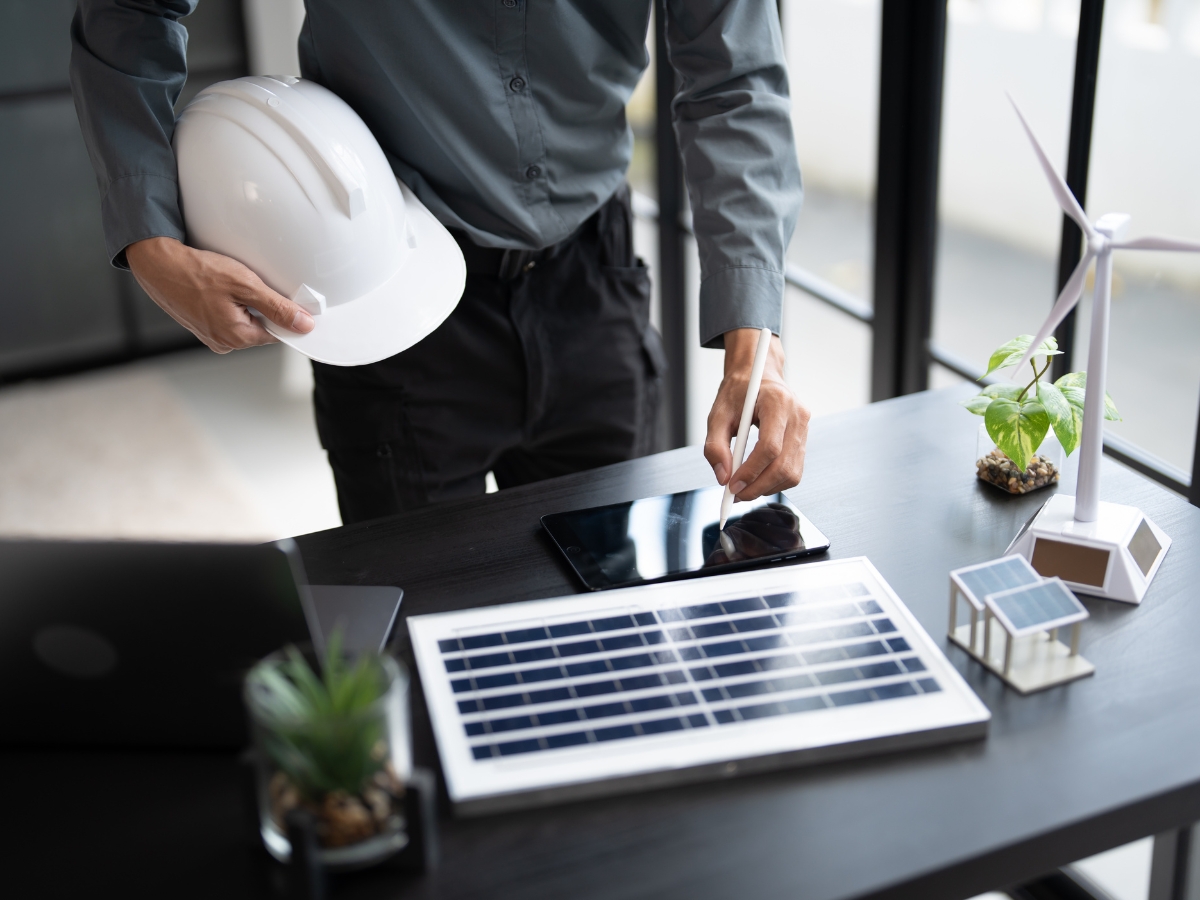
FD Remodeling Atlanta uses a clear four-phase workflow that turns plans into measurable performance. The goal is simple—pair the right upgrades with your house and your budget so you get real savings and better comfort. Each phase builds on the last, which keeps decisions organized and ensures the work supports long-term results for energy-efficient home remodeling.
What Happens During The Consultation And Home Energy Assessment?
The process starts with a walk-through and data gathering. Technicians check the attic, crawl space, and exterior for air leaks, moisture issues, and insulation gaps. Ductwork is inspected for loose joints and pressure losses. Windows and doors are reviewed for U-factor, solar heat gain, and weatherstripping condition. Equipment age and efficiency are recorded, and thermostat settings are reviewed. When appropriate, a blower-door test establishes baseline air leakage and an infrared scan highlights missing or compressed insulation. With these findings, the team outlines priorities, expected savings, and a realistic sequence of work so you know what to do first and what can wait.
How Are Green Upgrades Designed And Implemented?
Design is where selections meet building science. The team sizes heating and cooling equipment using Manual J load calculations rather than rules of thumb, then designs ducts with Manual D for balanced airflow. Window packages are chosen for orientation and shading so glass facing strong sun gets lower SHGC values. Insulation types are matched to location—spray foam for complex air sealing, dense-pack cellulose for walls, and rigid foam where thermal bridging needs relief. Finish materials favor low-VOC paints, formaldehyde-free cabinetry, and durable recycled content options. A project calendar groups related tasks to cut down on dust and downtime, and crews follow air-sealing protocols around top plates, penetrations, and attic hatches before insulation goes in.
How Is Quality Assured During Construction?
On site supervisors verify substrate prep, taping, and sealant continuity before surfaces are covered. For windows, they confirm square, plumb installation, back damming, and continuous flashing so the assemblies shed water rather than trap it. Insulation depth is checked with rulers and photos so the installed R-value matches the plan. HVAC teams set airflow, confirm refrigerant charge, and program smart thermostats. Safety is part of quality—combustion appliances are tested for draft and carbon monoxide, and electrical connections are inspected for secure terminations.
What Verifies Long-Term Performance After Completion?
Performance is confirmed, not assumed. A post-project blower-door test measures the reduction in air leakage compared with the baseline. Thermal imaging validates complete insulation coverage and finds small misses that can be corrected immediately. Duct leakage testing documents delivery efficiency to each room. For heat pumps and furnaces, commissioning includes measuring temperature rise, static pressure, and airflow to ensure equipment operates inside specifications. You receive a summary that lists the upgrades, test results, and care guidelines such as filter change intervals, recommended thermostat schedules, and seasonal checks for weatherstripping and caulk.
How Does This Approach Help Johns Creek Homeowners?
Sequencing work from envelope to equipment to renewables captures the biggest savings first and reduces strain on mechanical systems. The house runs quieter, rooms hold steady temperatures, and monthly bills trend down. With documented tests and product specs on file, future maintenance is simpler and resale conversations are easier. That is the value of a structured, performance-verified plan for energy-efficient home remodeling—less guesswork, more comfort, and results you can measure.
Streamlining Your Energy-Efficient Remodel in Johns Creek

Homeowners in Johns Creek can tap a mix of utility rebates, federal tax credits, and flexible financing to lower the upfront cost of energy-efficient home remodeling. Utility incentives typically reward projects that cut heating and cooling loads, such as insulation, air sealing, high-efficiency HVAC, and window upgrades. Federal programs add tax credits for qualified improvements and renewable energy systems. Financing fills the gap with low fixed rates and predictable payments so you can phase projects without delaying comfort or savings.
Which Georgia And Federal Rebates Support Energy-Efficient Improvements?
Georgia Power periodically offers rebates for measures that improve the building envelope and HVAC performance. Common examples include incentives for attic insulation that meets current R-value targets, verified duct sealing, and high-efficiency heat pumps or air conditioners sized with proper load calculations. On the federal side, tax credits can apply to qualifying upgrades like insulation, exterior doors and windows, heat pump water heaters, and space conditioning equipment when they meet efficiency thresholds. A separate credit supports solar photovoltaic systems, and pairing solar with battery storage can increase resilience during outages. Program details change over time, so confirm current eligibility, caps, and documentation requirements before you purchase materials or schedule work.
What Financing Solutions Can Help Fund Sustainable Upgrades?
Several consumer-friendly loan types are designed for home performance projects. Unsecured home improvement loans offer fixed terms and do not require equity, which is helpful if you plan to bundle multiple upgrades at once. Home equity loans and HELOCs typically feature lower rates and longer terms, making larger envelope or HVAC projects more manageable month to month. Some utilities and local lenders provide on-bill or energy-efficiency loans where payments align with projected savings, improving cash flow. Commercial PACE financing exists in parts of Georgia for qualifying properties, while residential PACE availability is limited, so homeowners usually rely on the options above.
How Can Homeowners Maximize Savings Through Incentives?
Start with an energy assessment and a clear scope of work. Prioritize the envelope first, then equipment, then renewables. With a project list in hand, map each measure to its applicable rebate or credit and collect the required pre-approval forms, product spec sheets, and test results such as blower-door or duct leakage reports. Schedule work to meet program timelines and final inspections, and save all invoices and manufacturer certificates for your tax preparer. When possible, combine upgrades into a single contract to streamline permits and reduce mobilization costs. Align your loan term with expected payback so monthly payments track closely with estimated utility savings.
What Kind Of Results Can Johns Creek Homeowners Expect?
A coordinated plan often delivers stacked benefits. Air sealing and insulation reduce heating and cooling loads, which allows a right-sized high-efficiency heat pump to run quieter and cycle less. High-performance windows and insulated doors cut drafts and hot spots, making rooms more comfortable and protecting finishes from UV exposure. Solar offsets daytime consumption and can lower exposure to peak rates. With rebates lowering upfront costs, tax credits reducing net price, and financing smoothing payments, the path to a tighter, quieter, more comfortable house becomes practical for a wide range of budgets.
How To Get Started With Energy-Efficient Remodeling In Johns Creek
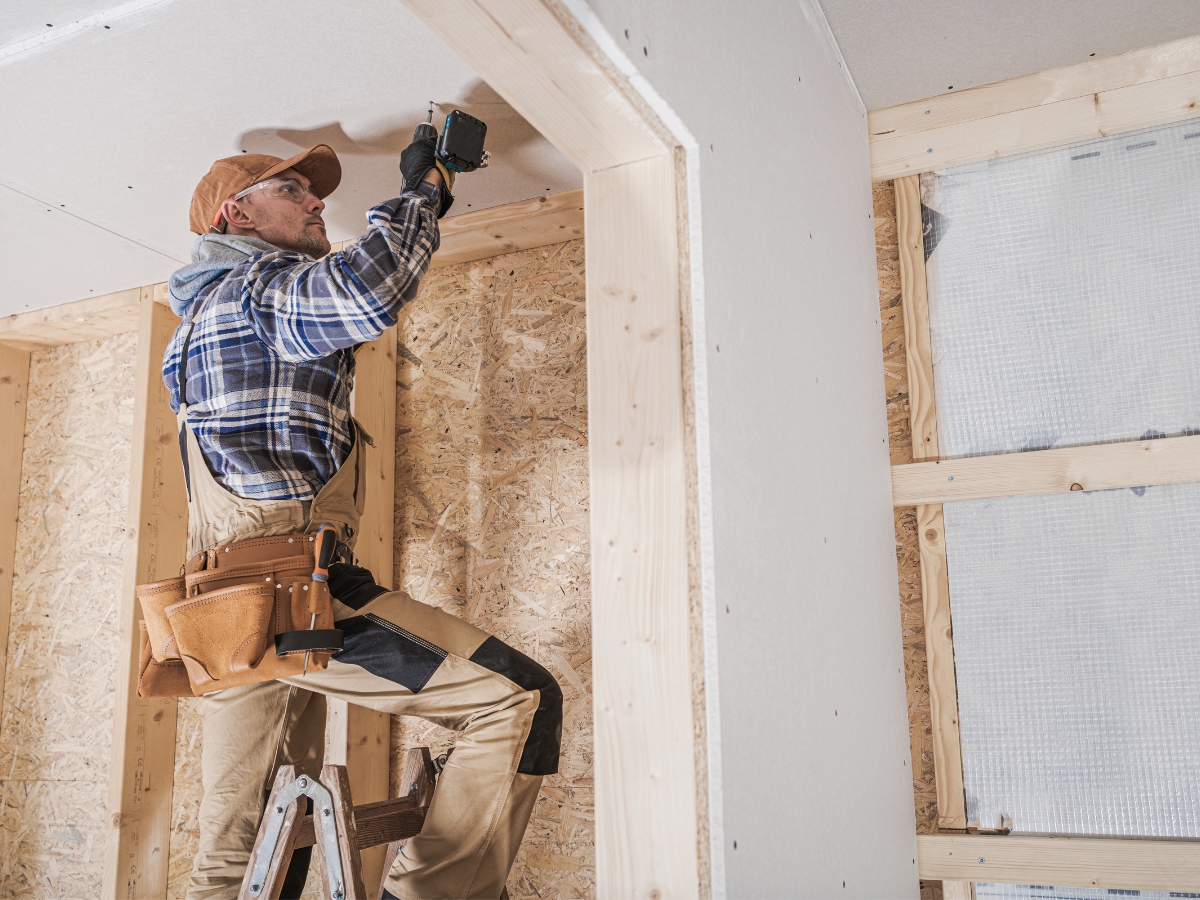
Getting started with energy-efficient home remodeling should feel clear, not complicated. Begin with an energy audit to learn how your house uses and loses energy. From there, translate those findings into a step-by-step plan that matches your budget and schedule. The goal is simple: lock in lower bills, steadier comfort, and a healthier home without guesswork.
What To Expect From The Initial Walkthrough
A thorough walkthrough looks at the attic, walls, crawl spaces, and ductwork to spot air leaks, moisture issues, and insulation gaps. Windows and doors are checked for draft points and solar heat gain, while your HVAC system is reviewed for age, sizing, and efficiency. You receive a clear summary that ranks opportunities by impact, so you can prioritize quick wins like air sealing and attic insulation before moving to larger investments.
How Proposals Turn Insights Into Action
Next comes a detailed proposal that outlines scope, materials, timeline, and projected savings. It should specify insulation types and target R-values, window performance ratings, and the expected efficiency of any new HVAC equipment. This document functions as your roadmap, helping you compare options, phase work if needed, and understand how each upgrade contributes to overall performance.
Design Selections And Budget Planning
Design choices matter for both looks and performance. Select window packages based on orientation, choose low-VOC finishes for better indoor air quality, and confirm that HVAC capacity is based on a Manual J load calculation rather than rules of thumb. If you plan to use utility rebates or federal credits, align product selections with eligibility requirements now to avoid costly changes later. Financing, if needed, should be sized so monthly payments track closely with expected energy savings.
Preparing Your Home For Installation
A little prep smooths the path for installation day. Clear access to the attic hatch and mechanical areas, move fragile items away from work zones, and plan for short periods of reduced HVAC use while sealing and insulation are completed. Good contractors protect flooring, manage dust, and communicate daily start and finish times. Coordinated scheduling limits disruption and keeps the project on track.
How FD Remodeling Atlanta Supports A Performance-First Approach
FD Remodeling Atlanta follows a test-in, test-out method that verifies results. Crews air seal before insulating, set window flashing to shed water, and commission HVAC systems so airflow and refrigerant charge meet specifications. Post-project blower-door testing, thermal imaging, and duct leakage measurements confirm that your home is tighter, better insulated, and delivering the comfort promised on paper.
Long-Term Care And Seasonal Checkups
Efficiency is not a one-time event. Plan for filter changes, quick seasonal checks of weatherstripping and caulk, and periodic thermostat reviews to keep schedules aligned with daily routines. If your project included new HVAC equipment, annual tune-ups help maintain high performance and catch small issues before they turn into repairs.
The Payoff For Johns Creek Homes
When upgrades are sequenced and verified, the benefits stack up: quieter rooms, fewer hot and cold spots, lower humidity in summer, and utility bills that trend down. With a clear process from audit to verification, energy-efficient home remodeling becomes a practical path to comfort and value in Johns Creek—one that pays dividends every season.vailable incentives, you can achieve a transformation that blends significant savings with lasting sustainability. Now is the perfect time to invest in both your home and the environment—take the first step toward a greener future today.
Conclusion
Investing in energy-efficient home upgrades is one of the smartest decisions a Johns Creek homeowner can make—reducing your environmental footprint while delivering significant, long-term savings on utility bills. At FD Remodeling Atlanta & Marietta, we specialize in green remodeling solutions, from high-performance windows and insulation to solar-ready roofing and energy-efficient appliances, all tailored to maximize your comfort and return on investment. Ready to build a smarter, more sustainable home? Call 404-857-5582or submit your project details through our online form for a personalized consultation. Let’s create a home that’s as efficient as it is beautiful.
